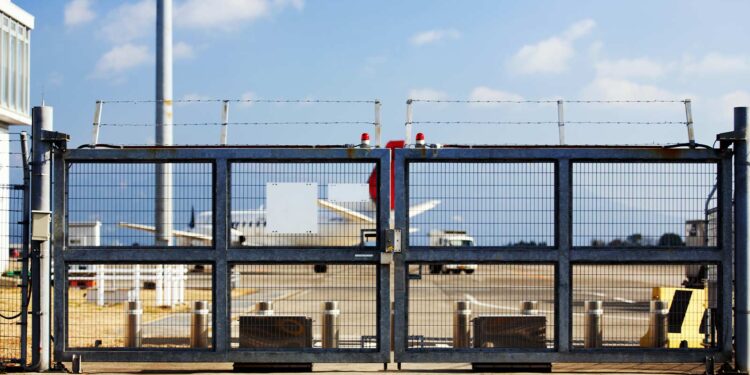Business Aircraft Ops to Military and Joint-Use Airfields: Part 1—General Considerations

This business aviation blog post is part of a series on operations to military and military/civilian joint use airfields.
Military and military/civilian joint-use airfields are occasionally used by general aviation (GA). Keep in mind that these locations often have unique requirements and procedures for processing permits. Particularly in the case of military airfields, there are usually additional permit complexities, longer lead times and operational restrictions to be mindful of.
If you are considering operating a business aircraft to one of these airfields, the following is an overview of what you need to know:
1. Examples of various military airfields used by GA
Northolt (EGWU) in the UK is an example of a military airport used by both private non-revenue and charter (non-scheduled commercial) GA operations. Leuchars (EGQL) used to allow GA traffic, but now only permits GA operations during special golf tournaments.
India has many military airports, controlled by either the Air Force or Navy, open to GA with certain restrictions. Agra (VIAG) is the most frequently visited of these military installations.
In southern Japan, Osaka Itami (RJOO) is open to GA on a very restricted basis.
Within the U.S, certain military airfields are used by GA from time to time, including Hickam AFB (PHIK) and Andrews AFB (KADW), primarily when associated with diplomatic operations. You’ll need some sort of official purpose to get into many of these military bases and permit lead times can be at least 30 business days. In the case of Shemya (PASY), in Alaska, it can take 8-12 weeks to arrange a permit and operating authority.
2. Not all military airports welcome GA
China and Russia, in general, do not permit GA to use their military airfields – even for alternates or equal time point (ETP) purposes. Military airfields such as Diego Garcia NSF (FJDG) and Guantanamo Bay NS (MUGM) are also not available to GA. Access to MUGM, for example, is restricted to military, the U.S. Dept of Defense and/or associated authorized contractors, and this location may not be used as an alternate or ETP. Ascension Island (FHAW) is pretty much the only airfield available in the South Atlantic region, but this location does not welcome GA ops nor does it allow the airfield to be used as a named alternate.
3. Permit revisions
Be mindful that changes to schedules and permits can be more challenging at military airfields as opposed to civilian airports. India, for example, generally requires 15 business days lead time to secure a permit (assuming all information submitted is complete and correct). If you arrive earlier than planned, you’ll need to revise your permit – this, however, is not a complete permit make-over. Generally, if you choose to delay a schedule, your permit remains valid, but you must provide notification.
For most international military airports, changing passengers or crew after a permit has been issued can cause issues. For instance, if a crewmember gets sick the day before operation and you want to swap him/her out, the new crewmember will need to be vetted, and it’s almost certain your trip to the particular military airfield will be delayed.
4. Challenges associated with military airfields
Even if a particular military airfield is open to GA, you really need to consider if it’s worth the extra trouble, permit lead time, and inherent reduction in operating flexibility. These facilities are geared toward military ops in everything from nav aids to infrastructure and support services offered. Because you could be dealing with permit lead times of up to 30 business days, limited hours of operation, and challenges with schedule revisions, you should have a good reason to pick a military airfield-such a proximity to a destination (which we’ll cover more in depth in part 2 of this series). Particularly if you have passengers who frequently change schedules, civilian airport options are usually the better choice.
5. Additional considerations
In emergency situations GA operators, theoretically have the right to land anywhere – including assorted military airfields worldwide. But, if you’re diverting to a military installation in China or Russia it had better be a good emergency, and you’ll need to very clearly communicate your situation to airport authorities. Diverting without a good reason and a clear notification can potentially be a life threatening situation at some military locations.
Conclusion
With the exception of a very few number of military airfields, such as EGWU, operations to military airfields are often much more complicated than to civilian airfields. Operational logistics and passenger schedule flexibility are often significantly reduced over civilian airport options. Best practice is to ensure you have an independent ground handler available on-site to oversee all aircraft requirements on the ground.
Questions?
If you have any questions about this article or would like assistance planning your next trip to a military airfield, contact me at keithforeman@univ-wea.com.
Stay tuned for Part 2, which covers more information on military and military/civilian joint use airfields.




